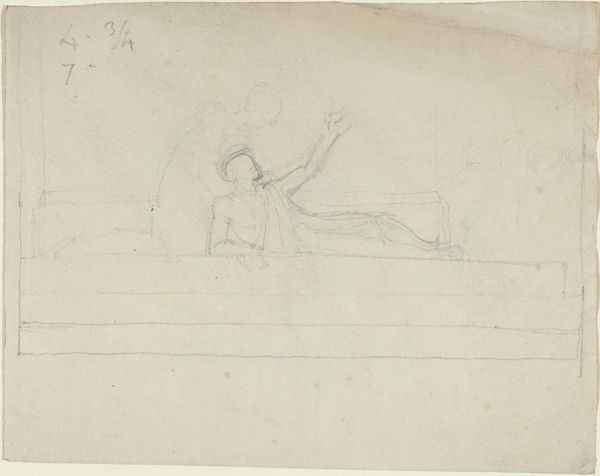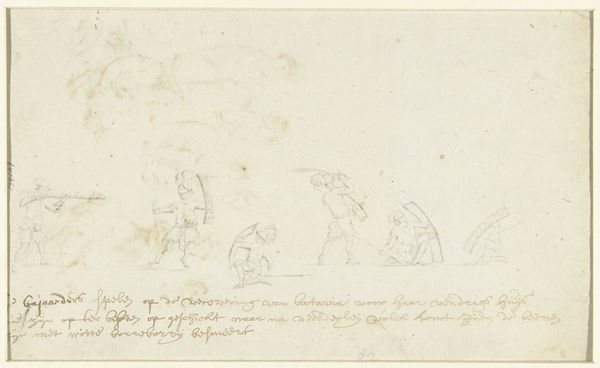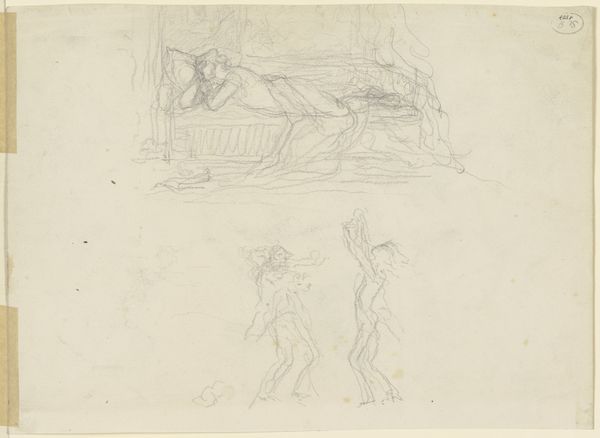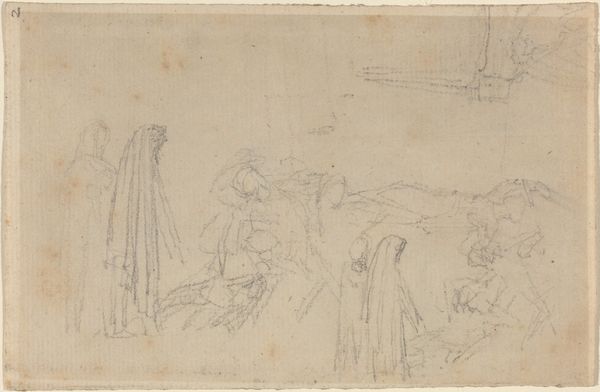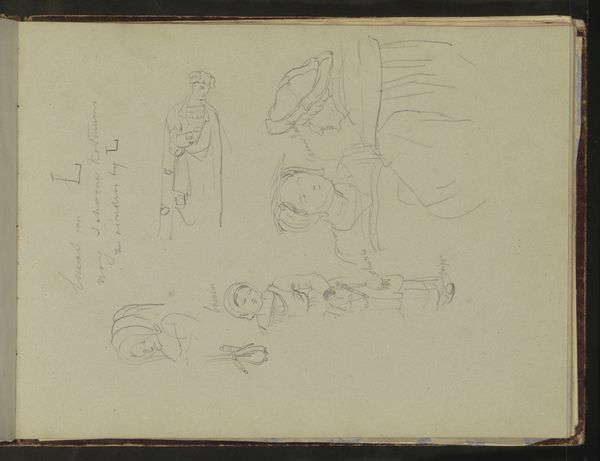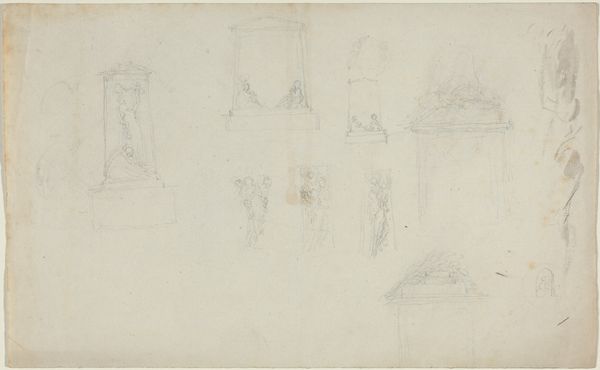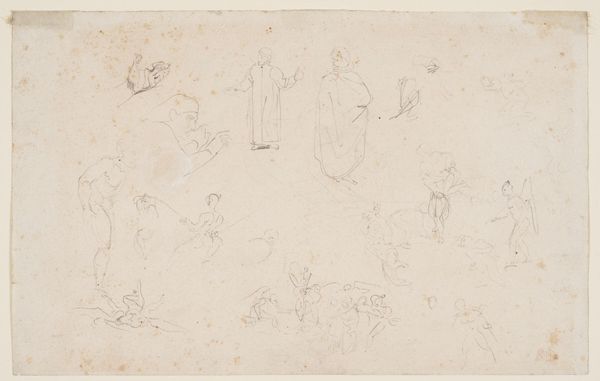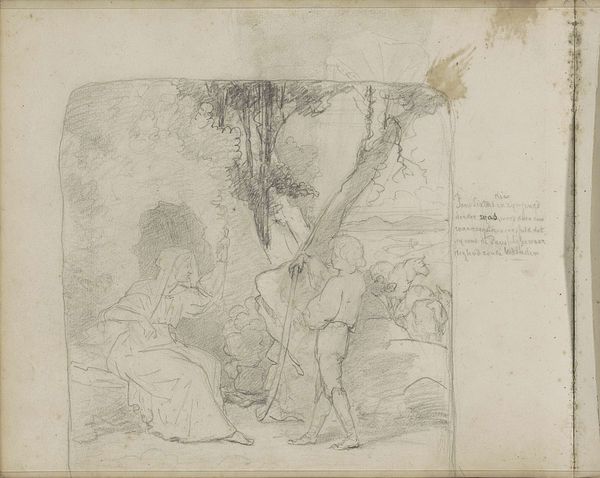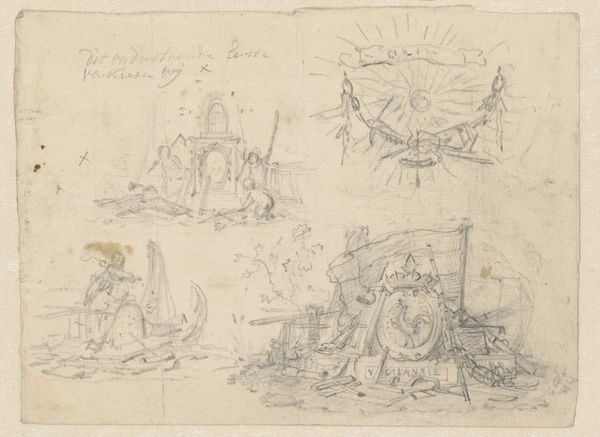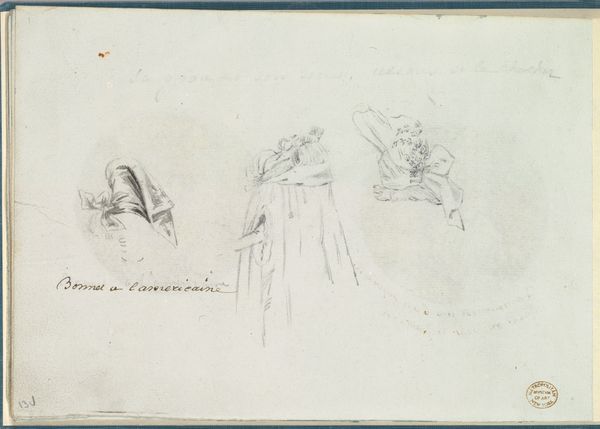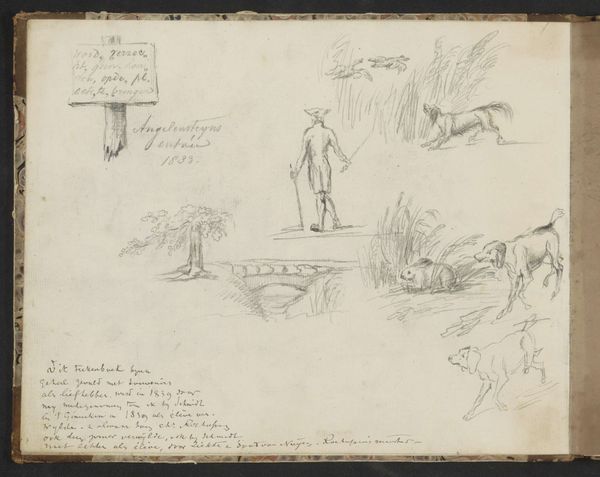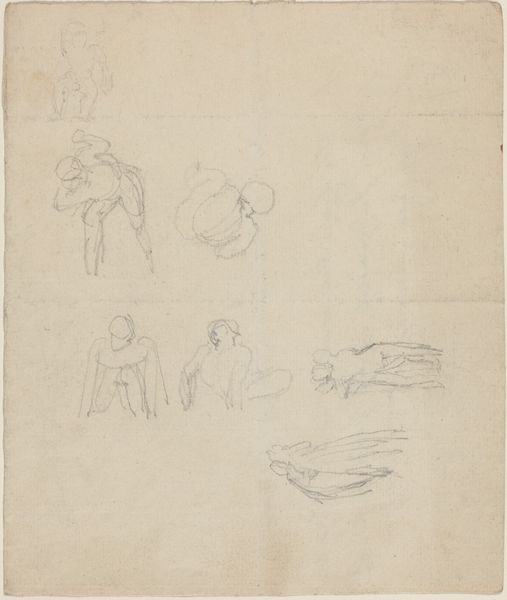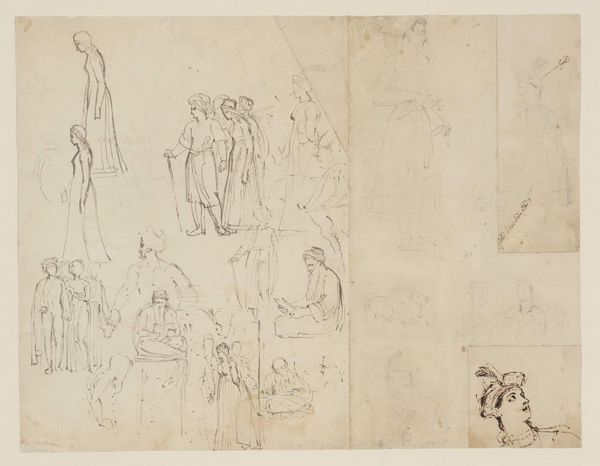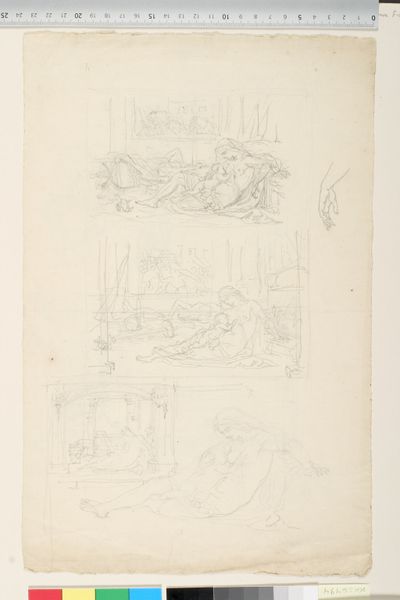
drawing, paper, pencil
#
drawing
#
toned paper
#
light pencil work
#
quirky sketch
#
dutch-golden-age
#
pencil sketch
#
landscape
#
figuration
#
paper
#
personal sketchbook
#
sketchwork
#
ink drawing experimentation
#
pen-ink sketch
#
pencil
#
sketchbook drawing
#
sketchbook art
Dimensions: height 206 mm, width 296 mm
Copyright: Rijks Museum: Open Domain
Editor: This is "Schetsblad met moors graf en vrouwenfiguur", a sketch on paper by Wouter Schouten, around 1660. The sheet is divided into quadrants with these light pencil sketches of what appears to be figures, graves and various vessels. It looks like the artist was just capturing the forms he observed or imagined. What do you see in this piece? Curator: Formally, I see a dynamic interplay of line and space, particularly within the distinct, separate groupings of forms. The tonality achieved on the paper allows the pencil lines to be absorbed, which emphasizes shape and relation rather than any strict adherence to representational accuracy. Look at the upper right section; how does the figure seem to hover? The line seems less to define and more to imply its existence. Editor: That's a good way of putting it. It does appear like an ethereal, otherworldly study. But how do these disparate sketches relate? Curator: Note how the artist does not commit to any specific vanishing point. There are no compositional "tricks" like you would see with perspectival orthoganols and transversals to feign deep space. The Moorish grave, vessels and floating female figure appear as equal subjects sharing a common surface. Editor: Are you saying the image isn't concerned with storytelling, but only with its own visual existence? Curator: Precisely. The drawing invites us to examine its inherent structural and compositional qualities. We can observe Schouten's attention to form, balance, and the considered arrangement of figures on a two-dimensional plane. Consider how the vessel mirrors the figure - its curvilinear silhouette set in contrast against geometric elements - what is the purpose of this interplay? Editor: Now that you point that out, it certainly feels like a visual riddle asking us to find corresponding relationships in terms of shape and texture, without obvious logic or connection. It's given me a fresh perspective. Curator: Indeed. Approaching a work like this through formalism highlights the intrinsic aesthetic qualities, allowing a richer, perhaps previously unseen, appreciation of artistic intention.
Comments
No comments
Be the first to comment and join the conversation on the ultimate creative platform.
